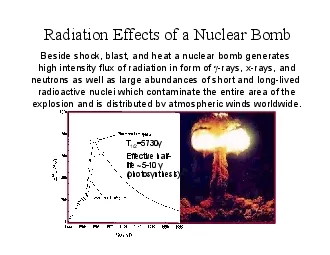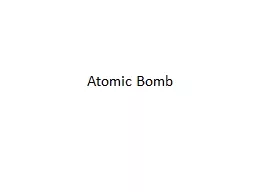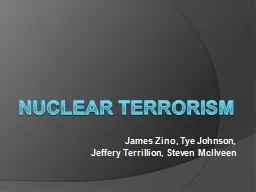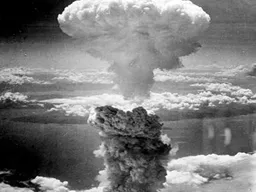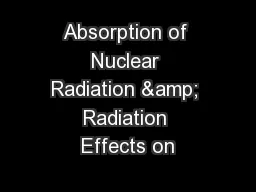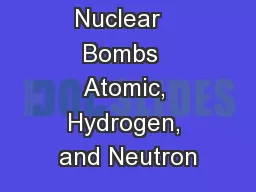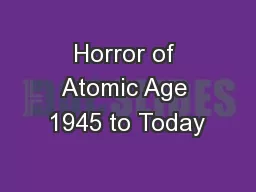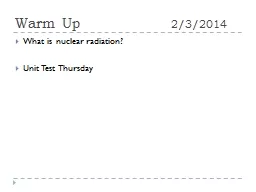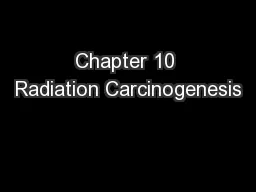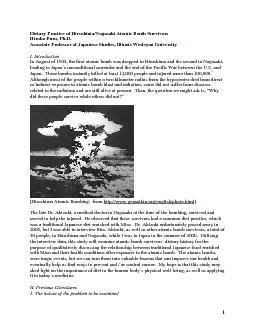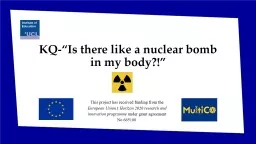PDF-Radiation Effects of a Nuclear Bomb
Author : gabriella | Published Date : 2021-08-21
Beside shock blast and heat a nuclear bomb generates high intensity flux of radiation in form of rays xrays andneutrons as well as large abundances of short and
Presentation Embed Code
Download Presentation
Download Presentation The PPT/PDF document "Radiation Effects of a Nuclear Bomb" is the property of its rightful owner. Permission is granted to download and print the materials on this website for personal, non-commercial use only, and to display it on your personal computer provided you do not modify the materials and that you retain all copyright notices contained in the materials. By downloading content from our website, you accept the terms of this agreement.
Radiation Effects of a Nuclear Bomb: Transcript
Download Rules Of Document
"Radiation Effects of a Nuclear Bomb"The content belongs to its owner. You may download and print it for personal use, without modification, and keep all copyright notices. By downloading, you agree to these terms.
Related Documents

